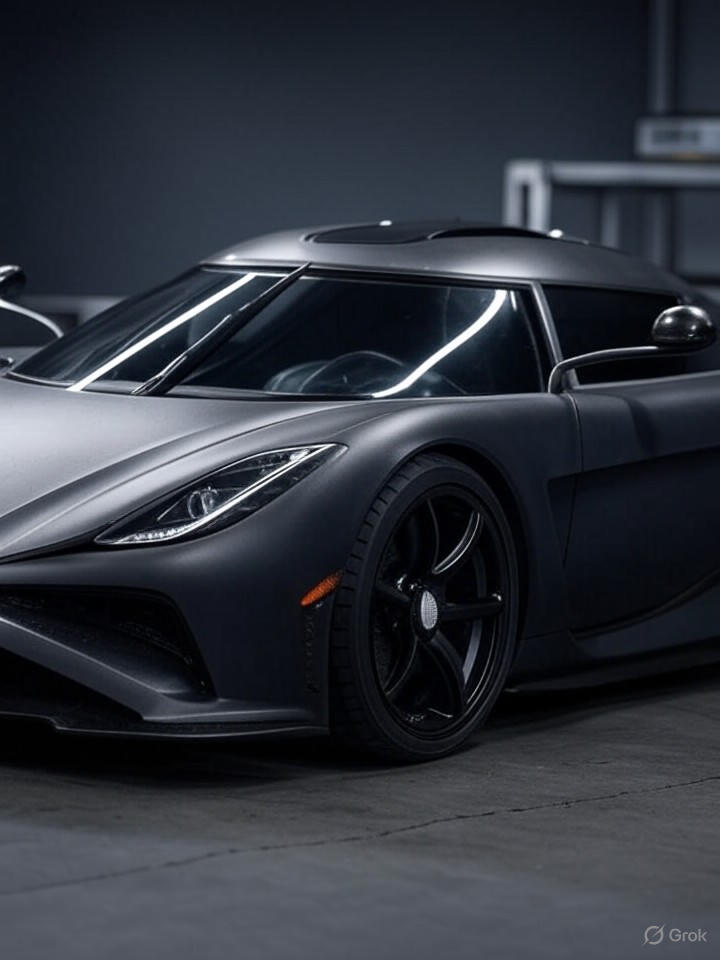Koenigsegg’s Bold Leap into Electric Propulsion
In the high-stakes world of hypercar manufacturing, Swedish innovator Koenigsegg Automotive AB is pushing boundaries with a new electric motor that promises to redefine performance metrics for battery-powered vehicles. The company’s latest creation, dubbed the Dark Matter, weighs a mere 86 pounds yet delivers an astonishing 800 horsepower and 922 pound-feet of torque, leveraging a unique six-phase design and carbon fiber construction. This isn’t just an incremental improvement; it’s a potential game-changer for electric vehicle (EV) efficiency and power density, allowing for lighter, more agile designs that could challenge traditional internal combustion paradigms.
Founded by Christian von Koenigsegg in 1994, the Ängelholm-based firm has long been synonymous with record-breaking speed, as noted in its Wikipedia profile, which highlights milestones like the CC8S and CCX models. But with the Dark Matter, Koenigsegg is venturing deeper into electrification, offering components that could be licensed to other manufacturers, thereby amplifying its influence on global CO2 reduction efforts, as detailed on the company’s official website.
Unpacking the Dark Matter’s Technical Edge
The motor’s innovative architecture combines axial and radial flux technologies, enabling unprecedented power in a compact package. According to a report in New Atlas, this “Raxial Flux” approach minimizes weight while maximizing output, making it ideal for hypercars and potentially broader EV applications. Industry insiders suggest this could solve persistent challenges in EV design, such as balancing range with performance, by allowing batteries to be smaller or vehicles to be lighter without sacrificing speed.
Koenigsegg’s foray builds on earlier experiments like the Quark motor, a 28-kilogram unit producing 340 horsepower, as covered in CPG Click Petroleo e Gas. These developments reflect a strategic pivot, even as CEO Christian von Koenigsegg has publicly dismissed pure EVs as “like robots,” per insights from Top Gear, emphasizing emotional engagement in driving.
Hybrid Synergies and Market Implications
Yet, the company isn’t abandoning its roots. The Dark Matter integrates seamlessly with hybrid systems, as seen in the Gemera hypercar, which pairs it with a V-8 or three-cylinder engine for up to 2,300 horsepower, according to Car and Driver. This hybrid approach could bridge the gap for performance enthusiasts wary of full electrification, offering blistering acceleration while addressing range anxiety.
For industry players, Koenigsegg’s tech signals a shift toward modular, high-performance EV components. As von Koenigsegg hinted in a YouTube interview on the channel’s platform, this engine could “wipe the floor” with current EVs, potentially disrupting giants like Tesla and Rimac. Production updates from Egg Registry indicate scaled manufacturing by 2026, aligning with new model launches.
Challenges and Future Horizons
Despite the hype, challenges remain, including scalability for mass-market vehicles and regulatory hurdles in emissions-focused markets. Koenigsegg’s reluctance to go fully electric, reiterated in Supercar Blondie, underscores a philosophy prioritizing driver thrill over zero-emission mandates.
Looking ahead, this innovation could catalyze broader adoption of advanced motors, influencing everything from sports cars to commercial fleets. As Volts & Volts posits, Koenigsegg’s engine might outperform EVs in key metrics, fostering a hybrid renaissance. For insiders, it’s a reminder that true disruption often comes from boutique players reimagining core technologies.




 WebProNews is an iEntry Publication
WebProNews is an iEntry Publication